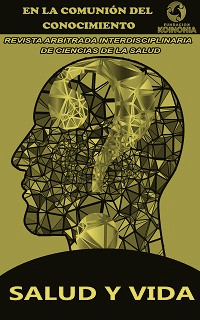Nursing knowledge about the initial neurological assessment of a patient with ictus in the emergency
DOI:
https://doi.org/10.35381/s.v.v7i2.2938Keywords:
stroke, stroke rehabilitation, cardiac rehabilitation, (Source: DeCS)Abstract
Objective: to analyze nursing knowledge about the initial neurological assessment of patients with stroke in the emergency room. Method: Descriptive observational. Results: Regarding the knowledge for the initial assessment, it was determined that there was correctness in most of the questions asked, correcting that the Cincinnati scale considers paralysis of some of the sides of the head as one of the symptoms of rapid detection. face, problems pronouncing words or confusion. Conclusion: Regarding the knowledge about the initial assessment, it was determined that the professionals had the ability to apply scales such as the Cincinnati assertively, however, the prevalence of non-recognition of some of the symptoms of stroke was evidenced. or of the procedures that must be carried out upon admission of patients to triage in the emergency room.
Downloads
References
Márquez, B., Pérez, M., Zurita, N., & Fernández, E. Innovación de la actuación de enfermería en la valoración neurológica del paciente con traumatismo craneoencefálizo [Innovation in nursing performance in the neurological assessment of patients with head trauma]. 2021, Revista fenix, 2(1), 13-20.
Pierin AMG, Flórido CF, Santos JD. Hypertensive crisis: clinical characteristics of patients with hypertensive urgency, emergency and pseudocrisis at a public emergency department. Einstein (Sao Paulo). 2019;17(4):eAO4685. Published 2019 Aug 29. doi:10.31744/einstein_journal/2019AO4685
Shao PJ, Sawe HR, Murray BL, Mfinanga JA, Mwafongo V, Runyon MS. Profile of patients with hypertensive urgency and emergency presenting to an urban emergency department of a tertiary referral hospital in Tanzania. BMC Cardiovasc Disord. 2018;18(1):158. doi:10.1186/s12872-018-0895-0
Genç Yavuz B, Söğüt Ö, Çolak Ş, Koldaş M, Yücetaş E, Bari O. Low serum corin levels predict end-organ damage in patients with hypertensive crisis. Anatol J Cardiol. 2021;25(8):536-543. doi:10.5152/AnatolJCardiol.2021.06698
Pastor Antonio J, Venegas Á Soto. Urgencias neurológicas y modelos organizativos [Neurological emergencies and models of care]. Rev. méd. Chile [Internet]. 2019; 147(3): 395-397.
Pigretti SG, Alet MJ, Mamani CE, et al. Consenso sobre accidente cerebrovascular isquémico agudo [Consensus on acute ischemic stroke]. Medicina (B Aires). 2019;79 Suppl 2:1-46.
Rodríguez Vico A, Sánchez Hernández F. Triaje por enfermería en el ictus agudo [Nursing triage in acute stroke]. Enf Global [Internet]. 2021;20(4):108-30. Disponible en: https://revistas.um.es/eglobal/article/view/465261
Zhelev Z, Walker G, Henschke N, Fridhandler J, Yip S. Prehospital stroke scales as screening tools for early identification of stroke and transient ischemic attack. Escalas de ictus prehospitalarias como herramientas de cribado para la identificación precoz del ictus y el accidente isquémico transitorio. Emergencias. 2021;33(4):312-314.
Jones SP, Jenkinson MJ, Leathley MJ, et al. The recognition and emergency management of suspected stroke and transient ischaemic attack. Clin Med (Lond). 2007;7(5):467-471. doi:10.7861/clinmedicine.7-5-467
European Stroke Organisation (ESO) Executive Committee; ESO Writing Committee. Guidelines for management of ischaemic stroke and transient ischaemic attack 2008. Cerebrovasc Dis. 2008;25(5):457-507. doi:10.1159/000131083
McArthur KS, Quinn TJ, Dawson J, Walters MR. Diagnosis and management of transient ischaemic attack and ischaemic stroke in the acute phase. BMJ. 2011;342:d1938. doi:10.1136/bmj.d1938
Chi NF, Wen CP, Liu CH, et al. Comparison Between Aspirin and Clopidogrel in Secondary Stroke Prevention Based on Real-World Data. J Am Heart Assoc. 2018;7(19):e009856. doi:10.1161/JAHA.118.009856
Vidyanti AN, Chan L, Lin CL, et al. Aspirin better than clopidogrel on major adverse cardiovascular events reduction after ischemic stroke: A retrospective nationwide cohort study [published correction appears in PLoS One. 2020 Apr 15;15(4):e0232016]. PLoS One. 2019;14(8):e0221750. doi: 10.1371/journal.pone.0221750
Marándola MM, Jiménez-Martín I, Rodríguez-Yáñez M, Arias-Rivas S, Santamaría-Calavid M, Castillo J. Terapia del movimiento inducido por restricción en la rehabilitación de la heminegligencia después de un ictus [Constraint-induced movement therapy in the rehabilitation of hemineglect after a stroke]. Rev Neurol. 2020;70(4):119-126. doi:10.33588/rn.7004.2019330
Bang DH, Shin WS, Choi HS. Effects of modified constraint-induced movement therapy with trunk restraint in early stroke patients: A single-blinded, randomized, controlled, pilot trial. NeuroRehabilitation. 2018;42(1):29-35. doi:10.3233/NRE-172176
Published
How to Cite
Issue
Section
License
Copyright (c) 2023 Patricia Maricela Ramírez-Guamingo, Neris Marina Ortega-Guevara, Yarintza Coromoto Hernández-Zambrano, Yeisy Cristina Guarate-Coronado

This work is licensed under a Creative Commons Attribution-NonCommercial-ShareAlike 4.0 International License.
CC BY-NC-SA : Esta licencia permite a los reutilizadores distribuir, remezclar, adaptar y construir sobre el material en cualquier medio o formato solo con fines no comerciales, y solo siempre y cuando se dé la atribución al creador. Si remezcla, adapta o construye sobre el material, debe licenciar el material modificado bajo términos idénticos.
OAI-PMH: https://fundacionkoinonia.com.ve/ojs/index.php/saludyvida/oai.









